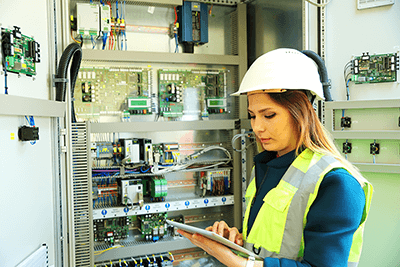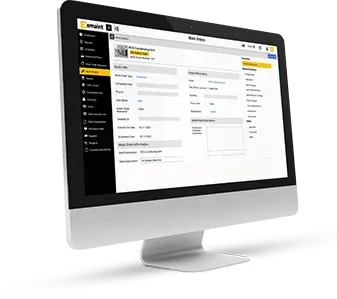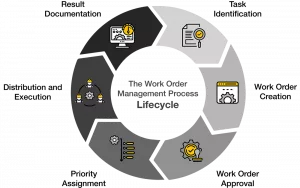 Three types of maintenance software dominate the asset management software market: computerized maintenance management system (CMMS) software, enterprise asset management (EAM) software, and asset performance management (APM) software. Each solution can give you critical, data-driven insights into your operations and help you get the most value from your equipment.
Three types of maintenance software dominate the asset management software market: computerized maintenance management system (CMMS) software, enterprise asset management (EAM) software, and asset performance management (APM) software. Each solution can give you critical, data-driven insights into your operations and help you get the most value from your equipment.
So, what’s the difference between CMMS vs. EAM vs. APM? And how can enterprises choose between them? The reality is that the lines have started to blur between each of these. For example, eMaint is both an award-winning CMMS and an award-winning EAM. And, when combined with our asset health software and Fluke sensors and tools, eMaint also has the solutions most look for in an APM.
It’s easy to get lost in the acronyms, so let’s break down what each system is, how they’re different, and how to leverage the right tech for your unique needs.
What is a CMMS System?

A CMMS is maintenance software for managing assets, work orders, inventory, preventive maintenance, condition monitoring, and more. A CMMS further serves as a command center for maintenance and reliability programs and is a centralized database for storing your maintenance data. You can use its work order software to track work orders and gain insights into asset health and performance, as well as track spare parts inventory across multiple sites, even connecting parts with work orders. Many modern CMMS also prioritize their mobile work order apps for maintenance management on the go. eMaint’s mobile CMMS even lets teams work offline. These work management features also prove vital when it comes to streamlining regulatory compliance.
To learn more, see What is a Computerized Maintenance Management System?
What is an EAM System?
An enterprise asset management (EAM)system helps you manage all of your organization’s assets, your supply chain, spare parts inventory, financial systems, and more. In general, EAM refers not just to one software but to a strategy and ecosystem of multiple solutions working together to provide a holistic approach to asset lifecycle management — from procurement through to disposal.
To learn more, see What is Enterprise Asset Management?
What is an APM Software?
An asset performance management (APM) software focuses on pairing modern maintenance software with technology like sensors to amplify asset management. An APM software system collects and analyzes condition monitoring data to help maintenance teams take data-driven actions that reduce asset failures and unplanned downtime — and ultimately extend an asset’s useful life.
To learn more, see What is Asset Performance Management?
Which Maintenance Software Should You Use?
If you’re still confused having read through those similar sounding descriptions, it’s because CMMS, EAM, and APM providers are increasingly deploying software features that diminish the differences between each. So, a CMMS like eMaint can connect to sensors like many APMs, and it also has powerful integrations to connect to other software through the enterprise like an EAM. Each organization needs to decide which features matter most to them.

CMMS vs. EAM Software
A computerized maintenance management system (CMMS) tracks preventive maintenance activities, inventory management, and repair catalogs. Meanwhile, an enterprise asset management system (EAM) is a holistic network of controlled systems, software, and services dedicated to the maintenance of physical assets and infrastructure throughout their entire lifecycle.
In other words, an EAM is core to your asset health and lifecycle strategy. It is a holistic system that impacts every aspect of your infrastructure and asset management. Meanwhile, a CMMS is a tool that allows you to centralize and optimize the information integral to EAM.
A CMMS enables you to automate tasks, streamline processes, and increase communication and transparency among your maintenance staff. A CMMS is also a control center for managing spare parts inventory, monitoring asset health, and executing your maintenance strategy. Meanwhile, an EAM offers additional functionality that takes the whole lifecycle of an asset into view – from acquisition to disposal.
This means that a CMMS can actually be a part of an overall EAM strategy. While a CMMS focuses on maintenance management, EAM addresses the bigger picture of asset management beyond maintenance.
EAM vs. APM Software
An EAM connects physical assets across many locations at once to measure the cost of acquisition and decommission so you can extend the lifecycle of critical machines. EAM software provides business analytics for enterprises that are focused on reliability. When coordinating long-term projects, an EAM ensures resources are being properly allocated toward task completion. In addition, unlike APM, EAM typically refers to an overall strategy, not a singular software.
An asset performance management (APM) software is a platform explicitly used for two purposes: 1) helping organizations get the most out of their assets and achieve operational excellence, and 2) delivering real-time data and insights about the monitored assets. Using an APM software can help you reduce unplanned downtime and extend the useful life of assets by enabling you to remotely monitor asset health and performance — and respond promptly where and when it matters most.
Leveraging CMMS, EAM, and APM
Today’s CMMS, EAM, and APM solutions have become a structured powerhouse to manage both maintenance work and physical assets to get the most out of people and machines. Ultimately, which software you choose likely depends on which features your organization needs the most. For example, if your team creates thousands of work orders per year or often works in the field, you likely need a best-in-breed CMMS software for those purposes.
Another consideration is just how configurable the individual provider has made their software. Customers can choose which tools to deploy and then set them up across many sites. eMaint works with teams to decide which features they need and then offers help throughout the implementation process.
